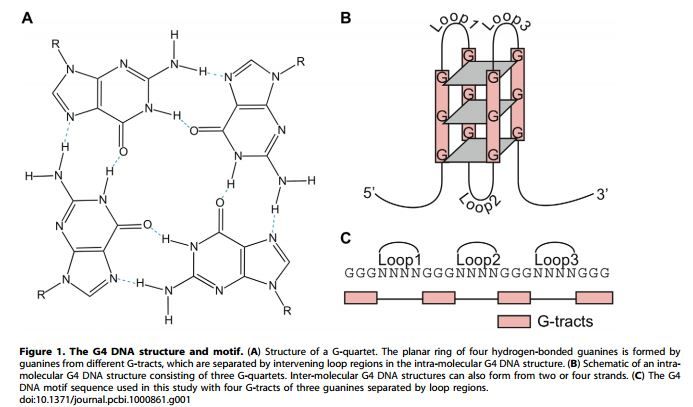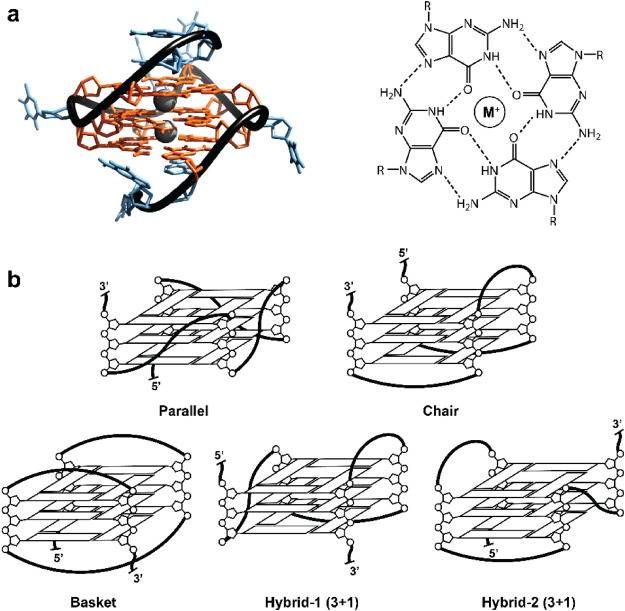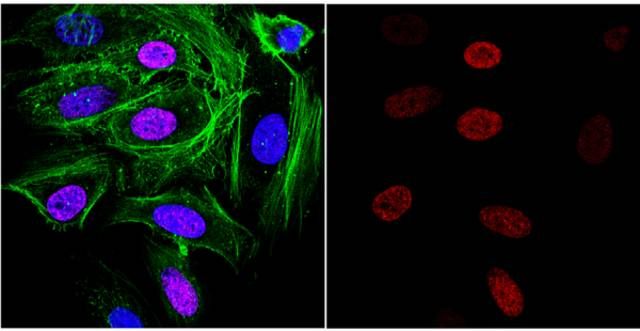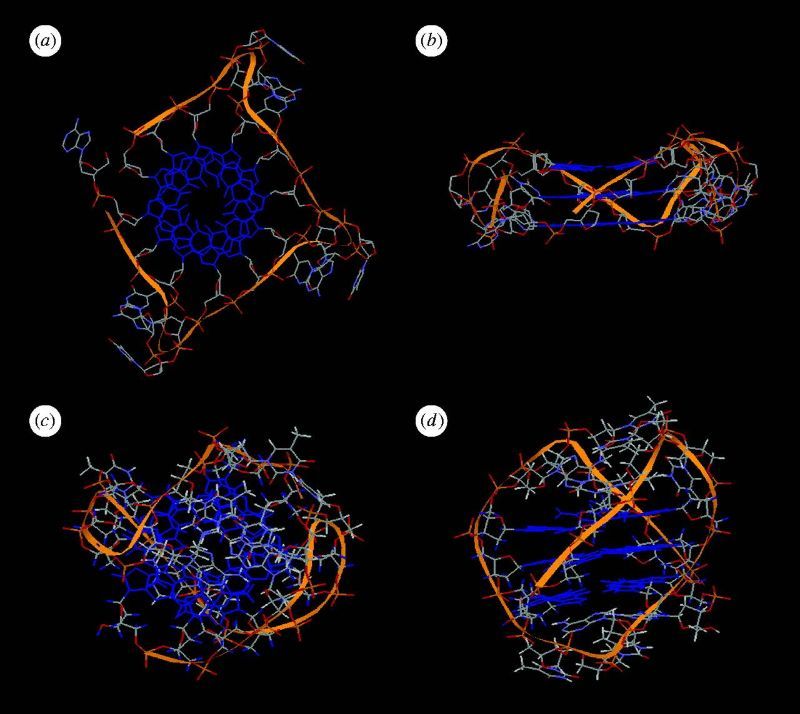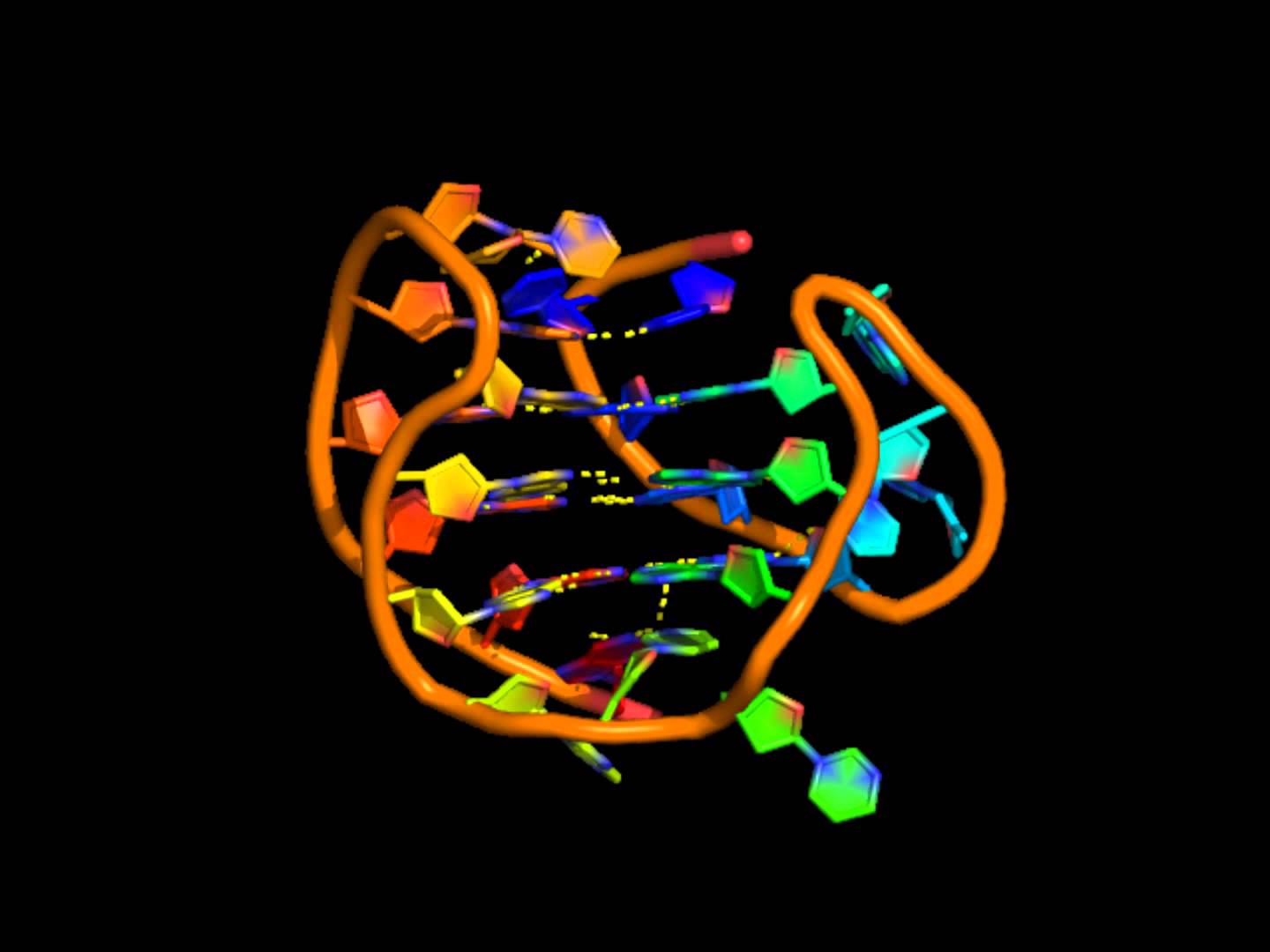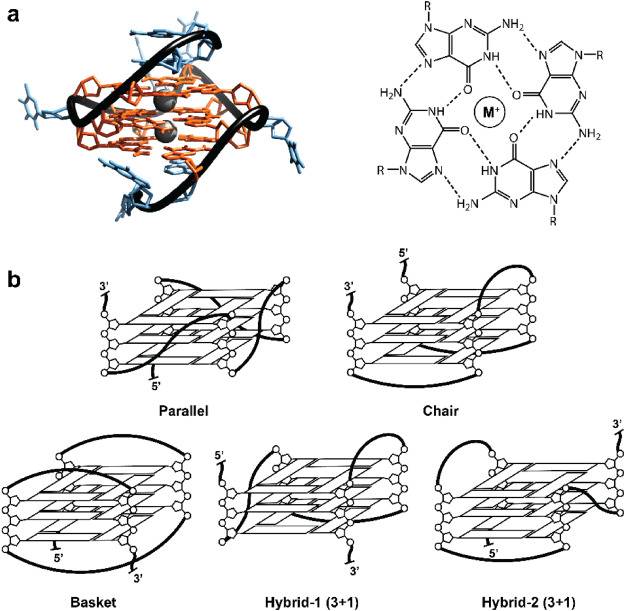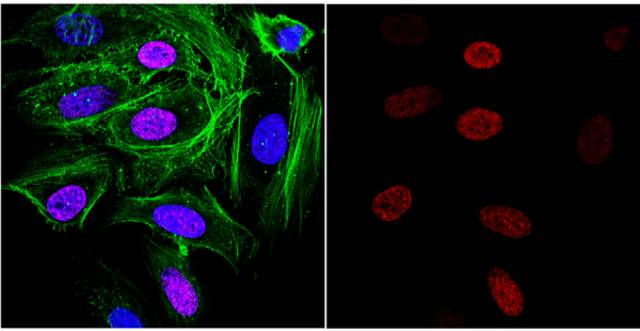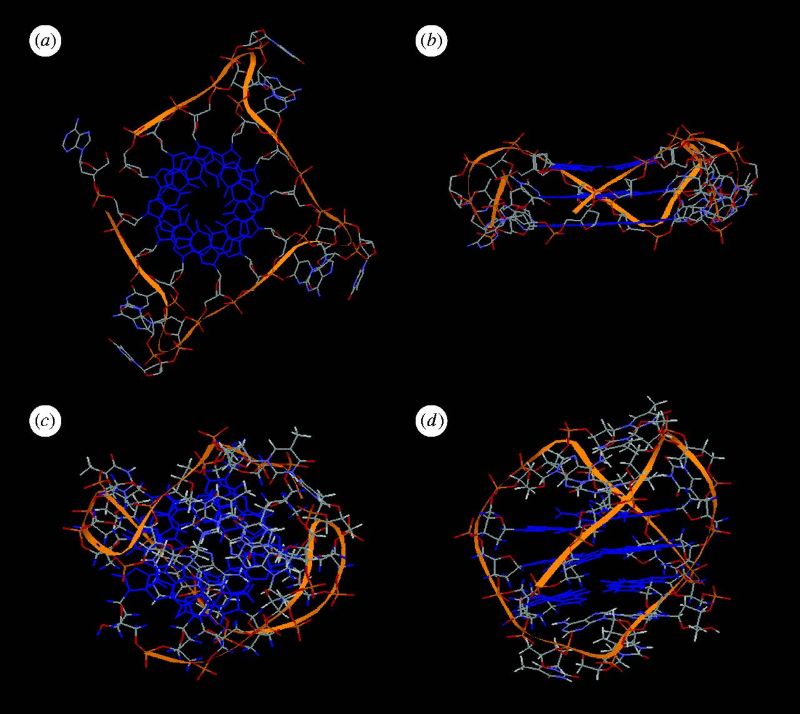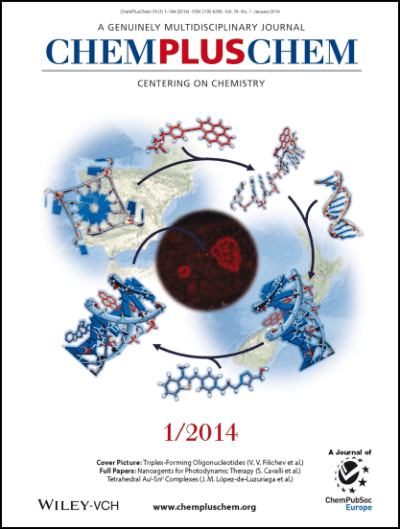G-quadruplex research
"The G-quadruplexes (GQs) are a large group of evolutionarily conserved higher order structures present in both lower (bacteria) and higher organisms (worms and humans). G-quadruplexes consist of guanine-rich sequences which form a core of stacked G-tetrads, plenary aligned guanines held by Hoogsteen H-bonding, and connected by loops arising from intervening mixed sequences that are not usually involved in tetrads themselves. The combination of the number of stacked tetrads, the polarity of the strands, the location and length of the loops as well as the syn versus anti conformation of the guanine bases leads to a vast variety of G-quadruplex topologies.
The GQ DNA structures were first discovered in vitro and later it was demonstrated that the telomeric G-rich single-stranded DNA sequences fold into a GQ structure under near-physiological in vitro conditions. Subsequently human telomeric repetitive sequences (dTAAGGG) have been shown to form GQ structures in vivo. While telomeric GQs are believed to be responsible for maintaining telomere length and stability, emerging evidence of non-telomeric GQs and their non-random distribution along the genome indicates alternative biological roles. GQs are enriched in certain regulatory elements such as CpG islands, enhancers, insulators and promoters, suggesting their involvement in gene regulation. Indeed, it was demonstrated that promoters of proto-oncogenes, c-Myc and KRAS, contain nuclease hypersensitive elements (NHEs) that form GQs that are interchangeable between a double-stranded form and GQs form. It was demonstrated that these interchangeable states of NHEs regulate recruitment of transcription factors to the promoters, thus regulating gene transcriptions. Small molecules selectively stabilizing GQ structures (c-Myc) or oligonucleotides mimicking a GQ DNA structure (KRAS) effectively manipulate gene transcriptions, thus the GQ structures have emerged as a considerable target for drug design because of their potential in combating cancer."
Jan 2017 Update
Our work is published in Nucleic Acid Research showing the revelation of a particular G-quadruplex topology distinguished by repeating along the 4.5 million base pair long E.coli genome for almost 23 times, half of all G-quadruplexes predicted along this genome by means of bioinformatics. In vitro analysis and molecular simulations showed that this sequence is indeed capable of forming both G-quadruplex as well as a duplex hairpin indicating a regulatory role as a structural switch. Moreover, This topology is found to be common in enterobacters suggesting evolutionarily conserved role.
Aug 2017 Update
Our project focusing on the investigation of genetic diseases caused by topological modification of G-quadruplexes is accepted to be funded by TUBITAK (Scientific and Technological Research Council of Turkey) starting from September.
In the frame of the project, a bachelor student will be awarded a year of scholarship and get the chance to learn about programming for bioinformatics applications and analysis of genomic information. Should you want to work in the project or collaborate please contact us.
Jan 2019 Update
Our research on G-quadruplex prediction yielded a novel tool to meet the needs for a better prediction tool in the field. The G4Catchall is published in the Journal of Theoretical Biology and available online.
As part of our research we seek the answer the questions of molecular biology using bioinformatics. Our investigation particularly focus on analysis of DNA sequences and revealing the hidden features of the genome. The bioinformatics analysis are performed using computer programs written in python and shared with scientific community on the "bioinformatic tools" page.
Molecular Engineering of Guanine-Rich Sequences: Z-DNA, DNA Triplexes, and G-Quadruplexes
Osman Doluca, Jamie M. Withers, and Vyacheslav V. Filichev
Chemical Reviews 2013 113 (5), 3044-3083
DOI: 10.1021/cr300225q
https://pubs.acs.org/doi/10.1021/cr300225q
Interdependence of pyrene interactions and tetramolecular G4-DNA assembly
O. Doluca, J. M. Withers, T. S. Loo, P. J. B. Edwards, C. González and V. V. Filichev, Org. Biomol. Chem., 2015, 13, 3742
DOI: 10.1039/C4OB02499K
http://pubs.rsc.org/-/content/articlelanding/2015/ob/c4ob02499k
G-quadruplex prediction in E. coli genome reveals a conserved putative G-quadruplex-Hairpin-Duplex switch
Kaplan, O. I., Berber, B., Hekim, N., & Doluca, O.
Nucleic Acids Research, 2016, 44(19), 9083–9095. http://doi.org/10.1093/nar/gkw769
https://www.ncbi.nlm.nih.gov/pmc/articles/PMC5100583/
